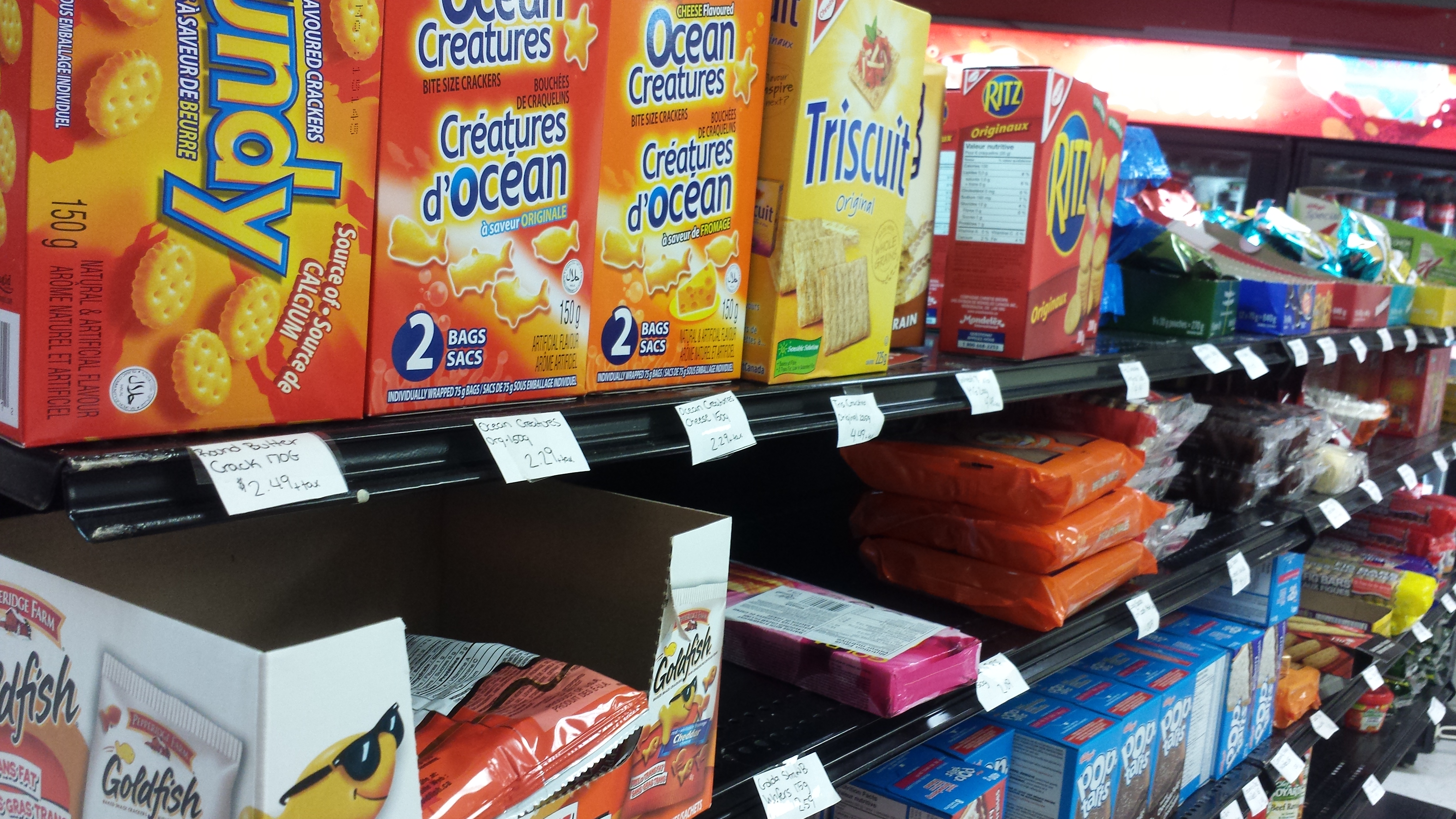As the value of the Canadian dollar continues to plunge, post-secondary students and campus food banks may face the brunt of the rising cost of living.
As of Jan. 20, the loonie is worth 69 cents compared to one U.S. dollar, largely a result of low oil production and prices. Canada imports 80 per cent of its food, which has to be bought in foreign currency, meaning consumers will have to spend more to purchase most kinds of foods.
The 2015 Hunger Count report conducted by Food Banks Canada found 54 per cent of food banks across Canada reported an increase in the number of users between 2014 and 2015. Overall, food bank usage is 26 per cent higher than that of 2008, according to the report.
Caitlin Phare, executive director of the campus food bank at the University of Alberta, said the number of students using their services has increased “dramatically.”
“As of yesterday, we already surpassed last January’s numbers for usage,” she said. “It’s just been going up and up.”
Of all the provinces, Alberta has seen the greatest use of food banks, with 23.4 per cent more people using them between 2014 and 2015, according to the recent Hunger Count report. The next highest spike occurred in the northern territories, with 9.1 per cent more people using food banks.
Seventy-five per cent of food banks in Alberta reported an increase in use, a national high.
A number of probable reasons contribute to the dramatic increase in students using food banks, but Phare noted a high unemployment rate in Alberta is a major factor, which currently sits at 10 per cent.
“When it comes to the economy, what definitely comes into play is the fact that a lot of those temporary student summer jobs aren’t available,” she explained. “Students are often the first ones hired, first ones fired.”
Despite the rise in usage, Phare said their supply has been able to keep up with the demand from their main sources of individual donations, other faculties, food drives, and its own yearly gala.
“We’re incredibly fortunate that we’re in a stable position right now. But it’s definitely going to be a growing concern for us, so we’re making sure we’re ahead of that curve as time continues,” she said. “I’m not expecting it to abate anytime soon.”
According to a study conducted by the University of Guelph’s Food Institute, households can expect to spend an additional $345 on food this year.
A head of cauliflower can cost almost $10 in some places in Canada.
The low value of the dollar coupled with droughts in food-growing regions such as California have been blamed for recent price hikes.
Andrea Bartels, a registered nutritionist in Ottawa, said students banding together and splitting grocery costs between roommates is the best way to save money in these costly times.
Particularly with meat prices going up 25 per cent in the last year according to the Guelph study, Bartels said purchasing more vegetarian proteins is a great way to save money and still get what you need.
“Beans and lentils are so inexpensive, so nutritious, and high in fibre,” she said. “So I really hope [students] can see the value in that, and ultimately make cheaper but equally nutritious meals.”
Carleton University’s Food Centre, its campus food bank, relies on donations from the Ottawa Food Bank. Liam Harrington, the food bank’s program co-ordinator, said the Ottawa Food Bank’s fixed budget might not cover the bulk of their needs if food prices continue to rise.
“They have a $1.2-million budget,” he said. “And that number doesn’t change, so if prices go up, that $1.2 million might not go as far.”
The Ottawa Food Bank hinted at this possibility when it told the Ottawa Citizen it expects possible reductions in donations and an increase in demand.
Harrington said it saw a large increase in the number of students using their services in December 2015, but the numbers have otherwise remained consistent so far into 2016.
He said they do see a large number of international students using their services, however.
“It’s concerning since they pay 20 grand a year for tuition on top of everything else,” he said. “So maybe we could ask for loans or grants or support from the university, different departments. We’re funded by the students to provide free service for the students, which just doesn’t really make sense.”






